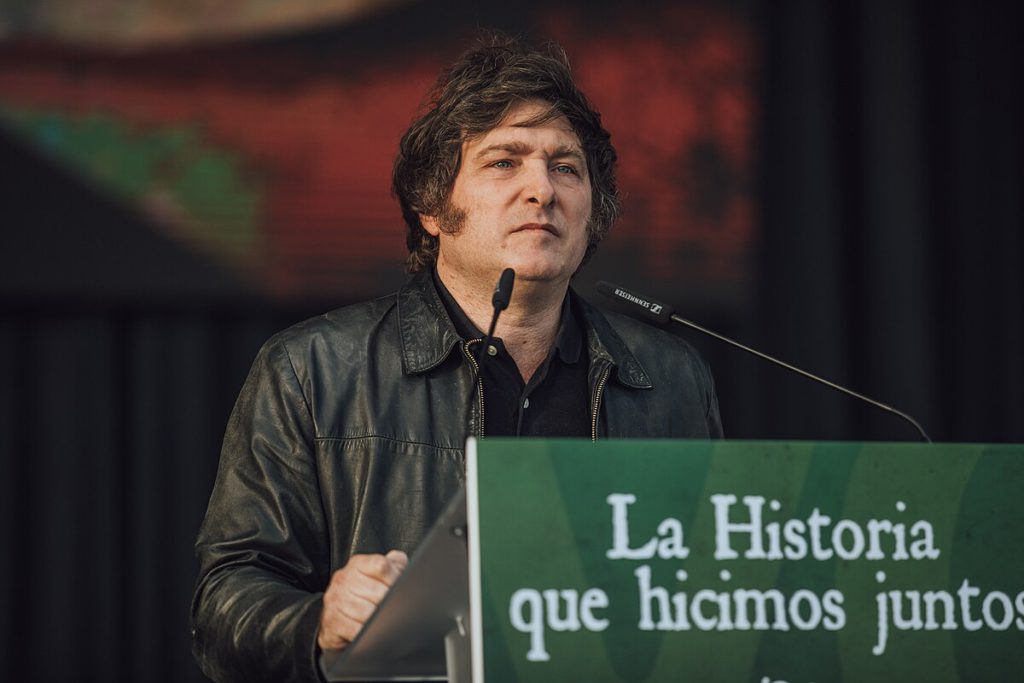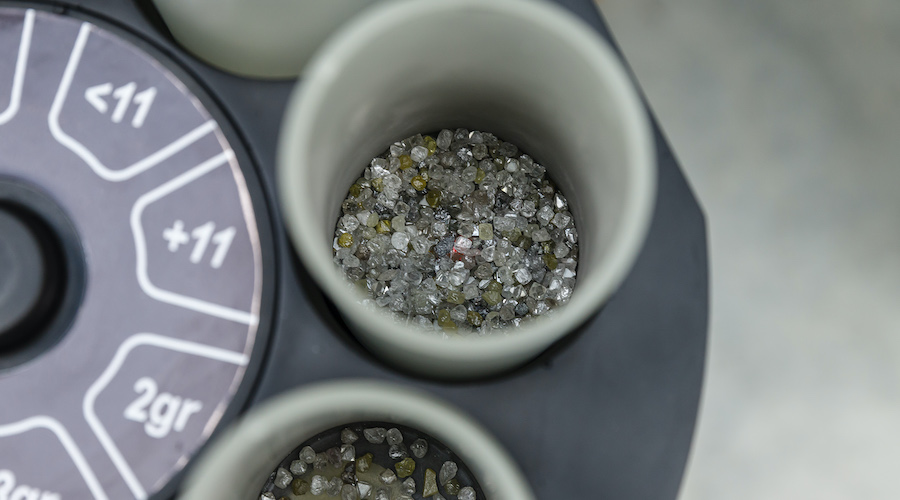CANADA
No to Antisemitism, No to Weaponizing it to Support Israel’s Crimes
MPs Anthony Housefather and Michael Levitt are more devoted to apartheid Israel than to their own prime minister and colleagues in the Liberal caucus.
— Dimitri Lascaris, 2018
The above tweet was criticized by all the major federal party leaders even though few could argue with it today. After the Centre for Israel and Jewish Affairs (CIJA) denounced the post as antisemitic, the prime minister, Conservative leader and a cascade of others followed suit.
In a betrayal worth reflecting on, many leftists and self-proclaimed solidarity activists echoed the anti-Palestinian lobby’s criticism. Rather than focusing on Canada’s complicity in apartheid, they prioritized Jewish sensitivities. In so doing they reinforced a political climate that’s enabled the killing of over 20,000 Palestinian while agonizing about a generally privileged Canadian Jewish community.
While it was obvious at the time, today no serious person could argue that Levitt and Housefather weren’t “more devoted to apartheid Israel than to their own prime minister and colleagues in the Liberal caucus.” Levitt left the party two years later to campaign full-time in favor of apartheid as CEO of Friends of Simon Wiesenthal Centre. Among a slew of examples, Levitt recently suggested Trudeau was antisemitic for expressing opposition to the killing of babies. He tweeted that the PM’s comments “fan the flames of Jew-hatred” and told CBC they “further fuel antisemitism and lashing out at Jews in Canada.”
After Canada recently voted with the vast majority of the world for a ceasefire at the United Nations, Housefather repeatedly condemned his own government to the media. A month ago, the Montréal MP also criticized Trudeau for his statement opposing the killing of babies. At the time CBC’s At Issue panel reported that Liberal MPs (presumably Housefather) had privately threatened to quit the party if Trudeau called for a ceasefire. He subsequently went on a solidarity trip to Israel. Alex Boykowich aptly dubbed Housefather “objectively Netanyahu’s man in the Canadian government/parliament.”
Levitt and Housefather care far more about Israel than Trudeau or the Liberal party. As I detailed, there was already a bevy of evidence at the time of Lascaris’ statement that Housefather and Levitt were obsessed with Israel and prioritized defending its crimes over their own party. But the immediate background to the 2018 tweet uproar made the condemnation completely outrageous.
After a demonstration opposing B’nai B’rith’s smears against the Canadian Union of Postal Workers, Lascaris called on Housefather and Levitt, CIJA, and others who had defended B’nai B’rith on the eve of the protest, to publicly repudiate two of that group’s supporters who called for a number of Muslim and brown politicians to be killed in a video detailing their participation in a counter protest to the rally against B’nai B’rith. Lascaris tweeted about the two B’nai B’rith supporters who “called for the death penalty to be imposed on Justin Trudeau & Liberal MPs Iqra Khalid, Omar Alghabra & Maryam Monsef” and asked Levitt and Housefather “to denounce” the threats “but shamefully, they’ve said nothing.” Then Lascaris tweeted: “ MPs Anthony Housefather and Michael Levitt are more devoted to apartheid Israel than to their own prime minister and colleagues in the Liberal caucus.”
In response CIJA tweeted: “Yesterday, CJPME [Canadians for Justice and Peace in the Middle East] Chair Dimitri Lascaris accused Jewish MPs Anthony Housefather and Michael Levitt of being disloyal to Canada. This is the literal definition of antisemitism under the IHRA [International Holocaust Remembrance Alliance] definition. Will CJPME publicly retract & apologize for this antisemitic smear?” Soon thereafter a slew of MPs, Conservative leader Andrew Scheer, Justin Trudeau, NDP leader Jagmeet Singh and others jumped to Housefather and Levitt’s defense or directly smeared Lascaris.
Despite all this being immediately detailed, a number of leftist voices followed the Israel lobby, focusing on “tropes” rather than Canada’s role in enabling an apartheid state waging unrelenting violence in (according to a recent Wall Street Journal article, Israel has attempted more – over 2,700 – international assassination missions then any country since World War II).
In a post-mortem on Lascaris’ narrow defeat in the 2020 Green Party leadership race The Breach founder Dru Oja Jay wrote “it should also be said that in 2018, Lascaris questioned the loyalty of two extremist pro-Israel Jewish MPs in a tweet. Questioning the loyalty of Jewish politicians is an anti-semitic trope with a long history. While he has condemned anti-semitism broadly and while there’s no doubt that charges of anti-semitism are used to silence advocates for Palestinian human rights (which Lascaris is), his refusal to back away from his remarks gave that line of attack levels of legitimacy that they would have otherwise lacked.”
The next year another Breach editor, Martin Lukacs, reiterated the point in an email claiming my defence of Lascaris was antisemitic. He wrote, “your defence of Dimitri Lascaris’ obtuse and offensive dual loyalty charge a few years ago against Canadian Liberal politicians followed a similar dynamic. In your writing, you seemed to either be ignorant of this classic trope of anti-Semitism, or you simply choose to ignore the connotations of what he wrote about.” (In response to the remarkable onslaught I immediately published “Canadian Zionists’ Unprecedented Smear Campaign against Dimitri Lascaris” and followed up with “CIJA, B’nai B’rith smear Palestine activist instead of racists, antisemite”. These articles emboldened Independent Jewish Voices and Toronto Star columnist Linda McQuaig to defend Lascaris and paved the way for the public letter backing Lascaris headlined “Prime minister owes human rights activist an apology”, which was signed by Noam Chomksy, Roger Waters, Chris Hedges and others.)
I rehash this history because many leftists, even those who call themselves anti-Zionist, have directly contributed to Canada’s deeply anti-Palestinian political climate. By prioritizing Jewish sensitivities about ‘tropes’, they’ve emboldened the Housefathers and Levitts of the world and further tilted the political terrain against those opposing Canada’s vast complicity in Israel’s horrors.
It also demonstrates how anti-Palestinian lobby groups set the agenda. If CIJA hadn’t created a brouhaha over Lascaris’ post, few would have seen the tweet, let alone complained about it years later. On principle leftists should be allergic to allowing an apartheid lobby that seeks to destroy left-wing movements set the tone on anything Palestine related.
Canadian political culture fixates on the sensitivities of Jews here rather than how Canada enables Israeli barbarism. Part of this reflects the dominance of nationalism. What happens here – or to Canadians abroad – is prioritized by the political and media establishment. You see this with the recent discussion of the uptick in hate crimes against Muslims and Arabs or Jews. While all acts of bigotry should be condemned, nothing that has transpired in Canada over the past 10 weeks remotely compares to the horrors in Gaza.
There’s also a specifically Jewish element to the fixation. With outsized influence in Hollywood and other domains, Jewish cultural influence is significant. Additionally, the Nazi Holocaust is a definitive historical reference point, which has intertwined anti-Jewishness with the ultimate evil.
It’s true that in Canada Jews are significantly over-represented as victims of hate crimes and there is a history of legalistic antisemitism, including McGill’s quotas on Jewish students between the 1920s-40s, “none is too many” WWII immigration policies and prejudicial land covenants targeting Jews and others into the 1950s. But there’s nothing in Canadian history approaching the antisemitism of Eastern Europe, let alone Nazi Germany. Additionally, today Jews are over-represented in positions of wealth and influence in Canada.
None of this is to say antisemitism does not exist. It does and when people express hatred for Jews simply being Jews we should condemn it. But being Jewish should not protect someone from criticism for supporting crimes against humanity such as apartheid, ethnic cleansing or genocide. Being Jewish should not protect someone for their anti-Palestinian racism. The self-proclaimed “Jewish state” can and should be criticized for its actions. If that offends some Jewish Canadians that is their problem.
Hypersensitivity regarding antisemitism is unwarranted when it is being so aggressively mobilized to enable horrors against Palestinians. Conscientious individuals must question how they uphold a political climate that enables Canadian complicity in the slaughter in Gaza.
Yves Engler is the author of 12 books. His latest book is Stand on Guard for Whom?: A People's History of the Canadian Military . Read other articles by Yves.
Palestinians’ Superior Right to Self-defence is Ignored, as Usual
UK’s Cameron/Sunak claptrap turns international law on its head
The UK’s leaders are tying themselves in knots in their desperate attempt to defend the indefensible.
In a debate on Israel and Palestine in Parliament last week, Under-Secretary of State for Foreign, Commonwealth & Development Affairs Leo Docherty got up and said:
There is no scenario in which Hamas can be allowed to control Gaza again. That is why we are not calling for a general ceasefire, which would allow Hamas to regroup and entrench their position. I am pleased to say that the government’s position is shared by the Opposition Front Bench. Instead, we are focused on urging respect for international law…
What a fatuous statement. If the UK government had any concern for international law Israel would not have been allowed to breach it continuous and with impunity for the last 75 years and the horrendous slaughter we’ve all been watching would never have happened.
As a foreign office minister, Docherty should be aware that Hamas is the legitimate government in Gaza, having won the last election fair and square. Israel, the US and UK might not like the result but that’s beside the point. What Docherty and his colleagues are contemplating is coercive regime change, which is hardly in line with international law or Palestinians’ right to self-determination.
Meanwhile, David Cameron, hurriedly parachuted in from outside Parliament as our new Foreign Secretary and breaching all democratic niceties, was telling everyone that there can be no resolution to the conflict in the Middle East if Hamas is still “armed to the teeth” and capable of attacking Israel. And he defended the UK’s decision to abstain on the UN vote for a Gaza ceasefire on the grounds that the UN was calling for an immediate armistice plus a two-state solution between Israel and Palestine, and “those two things don’t go together… If you have an immediate ceasefire but Hamas [is] still armed to the teeth, launching rockets into Israel, wanting to repeat 7 October, you’ll never have a two-state solution.
“Long-term security I think requires there to be a state for Palestine as well,” he said, sounding wonderfully generous, adding that he did not agree with “disappointing” comments made by Israeli ambassador to the UK, Tzipi Hotovely, on Wednesday 13 December that Tel Aviv would not back a two-state solution.
Had he been paying attention Cameron would know that the apartheid regime, from its very inception in 1948, has refused to contemplate the existence of a Palestinian state. That would thwart Israel’s ambition to establish sovereignty over the entire territory “from the river to the sea”, which is the express aim of Hotovely’s (and Netanyahu’s) vile party, Likud.
Britain, on the other hand, promised a Palestinian state back in 1915 but repeatedly reneged on it – in 1917, in 1923, in 1948 – and continues to sidestep the issue while forever prattling on about a two-state solution.
Cameron is also saying that Israel “must take stronger action to stop settler violence and hold the perpetrators accountable”. But his lordship should be telling Israel to do much more than that. To comply with international law Israel must remove its settlers and its thuggish military from the West Bank altogether, remembering that the West Bank includes East Jerusalem (and the Old City) and Gaza.
What needs eliminating is the threat posed by Israel
As I write, Cameron is changing tack slightly and now calling for a “sustainable” ceasefire because it has dawned on him that “too many civilians have been killed” by Israel. A joint article in the Sunday Times by him and German Foreign Affairs Minister Annalena Baerbock comes amid growing pressure on Israel over its methods in the war on Gaza. It states: “We do not believe that calling right now for a general and immediate ceasefire, hoping it somehow becomes permanent, is the way forward. It ignores why Israel is forced to defend itself: Hamas barbarically attacked Israel and still fires rockets to kill Israeli citizens every day.”
The usual misinformation. They ignore why the Palestinians are compelled to defend themselves, i.e. the brutal and murderous decades-long illegal occupation by Israel using military force.
“Hamas must lay down its arms,” say Cameron and Baerbock. And in a tepid warning to Israel, the two foreign ministers say: “Israel has the right to defend itself but, in doing so, it must abide by international humanitarian law. Israel will not win this war if its operations destroy the prospect of peaceful coexistence with Palestinians. They have a right to eliminate the threat posed by Hamas.”
But do they really? Where in international law does it say that an illegal occupier (such as Israel) can claim self-defence against a threat that emanates from the territory it illegally occupies?
Under UN Resolution 37/43, however, the Palestinians, as victims of illegal military occupation, have an unquestionable right to eliminate the threat posed by Israel in their struggle for “liberation from colonial domination, apartheid and foreign occupation by all available means, including armed struggle”.
Resolution 37/43 also condemns “the constant and deliberate violations of the fundamental rights of the Palestinian people, as well as the expansionist activities of Israel in the Middle East, which constitute an obstacle to the achievement of self-determination and independence by the Palestinian people and a threat to peace and stability in the region”.
The Palestinians’ right to armed struggle in self-defence is also confirmed in UN Resolution 3246, which calls for all States to recognise the right to self-determination and independence for all peoples subject to colonial and foreign domination and alien subjugation and to offer them moral, material and other forms of assistance in their struggle to exercise fully their inalienable right to self-determination and independence.
Resolution 3246 reaffirms the legitimacy of the peoples’ struggle for liberation from colonial and foreign domination and alien subjugation by all available means, including armed struggle, and demands full respect for the basic human rights of all individuals detained or imprisoned as a result of their struggle for self-determination and independence, and strict respect for article 5 of the Universal Declaration of Human Rights under which no one shall be subjected to torture or to cruel, inhuman or degrading treatment.
There’s no sign that Cameron and the rest of the UK government understand any of this.
And what right does the UK have to prevent Palestinians choosing their own government? None. The correct way to “eliminate the threat posed by Hamas” is to require Israel to end its occupation.
International law trampled to suit Israeli plans for domination
It is ludicrous to keep repeating that Israel must abide by international humanitarian law. Israel has no intention of doing so, and everyone knows it. Israel wants to dominate the Holy Land and has made that abundantly clear. Western governments and Western Christendom seem paralysed. The presumption must be that Biden and Cameron (both self-proclaimed Zionists, as were most of their predecessors) are overly sympathetic towards Israel and happy to trample international law to ensure the success of the apartheid regime’s criminal enterprise.
Many in the UK question why our parliamentarians are so concerned about the 1,200 Israeli dead following Hamas’s breakout attack and the 200-odd hostages when they couldn’t care less about the 10,651 Palestinians (including 656 women and 2,270 children) slaughtered by Israel in the 23 years before 7 October. Or the 7,200 Palestinian hostages held in Israeli jails, including 88 women and 250 children. Over 1,200 are held under “administrative detention” without charge or trial and denied due process.
An authority on international law, Dr Ralph Wilde, has produced a legal opinion on the Israeli occupation which might be helpful in putting an end to Cameron’s & co’s claptrap.
He points out that:
- There’s no valid basis in international law for the occupation and it is an unlawful use of force, an aggression, and a violation on the part of Israel against the Palestinian people’s right to self-determination. And aggression is a crime on an individual level for senior Israeli leaders. “As a result, the occupation is existentially illegal and must end immediately.”
- What’s more, an end to the occupation cannot be delayed by Israel’s failure to agree to the adoption of a peace agreement or by the unreadiness of the Palestinian people, by ‘facts on the ground’, or by waiting for the approval of the UN, the Quartet, the White House, the British Foreign Office or anybody else. Every day the occupation continues is a breach of international law.
- Palestinian people are treated in international law as a collective entity with rights, notably the right of self-determination and the right to freely choose whether or not to enter into international agreements. Palestine is what’s called a Self-determination Unit. The territory it covers is everything that is ‘not Israel’, legally, and includes Al-Quds/Jerusalem in its entirety, the rest of the West Bank beyond East Jerusalem, and Gaza.
- Israel’s recognition and UN membership did not include sovereignty over any part of Al-Quds/Jerusalem. Palestinians also enjoy the right of external self-determination (i.e. freedom from external domination) which has been universally accepted and affirmed by states and UN institutions including the General Assembly, the Security Council, and the International Court of Justice.
- And Palestine is a state in the international law sense because (a) there’s a presumption in favour of statehood for people with a right of external self-determination; and (b) a large majority (138) of the world’s states collectively recognized Palestinian statehood when the UN General Assembly voted in 2012 to re-designate Palestine’s status from ‘non-member Entity’ to ‘non-member State’. This had the effect of establishing statehood.
- External self-determination is a right to be free of any external domination, including occupation or other forms of non-sovereign territorial control which prevent the full exercise of that right. Such domination must end so that this right can be exercised.
- The right operates and exists simply and exclusively by virtue of the Palestinian people being entitled to it. It is not something that depends on anyone else agreeing to it, such as Israel, the Quartet, the UN, other states, etc. It is a right; so there is no need for Palestinians to negotiate or compromise with Israelis as the price for ending their occupation.
- Israel’s exercising control over the West Bank (including East Jerusalem) and Gaza, preventing the Palestinian people from full and effective self-governance, has for decades been a fundamental impediment to the realization of the right of self-determination which the Palestinian people are entitled to enjoy under international law. And there was no actual or imminent armed attack that justified the occupation as a means of self-defence prior to 7 October.
- Furthermore, there is no right under international law to maintain the occupation pending a peace agreement, or for creating ‘facts on the ground’ that might give Israel advantages in relation to such an agreement, or as a means of coercing the Palestinian people into agreeing on a situation they would not accept otherwise.
- Implanting settlers in the hope of eventually acquiring territory is a violation of occupation law by Israel and a war crime on the part of the individuals involved. And it is a violation of Israel’s legal obligation to respect the sovereignty of another state and a violation of Israel’s legal obligation to respect the right of self-determination of the Palestinian people; also a violation of Israel’s obligations in the international law on the use of force. Ending these violations involves immediate removal of the settlers and the settlements from occupied land and an immediate end to Israel’s exercise of control, including its use of military force, over those areas of the West Bank.
Advice to Messrs Sunak, Cameron and Docherty is surely to first get on the right side of international law – and human decency – and recognise Palestinian statehood without any more foot-dragging. Furthermore, to join with other states and tell Israel, firmly, that all cooperation, collaboration and favoured nation privileges are cancelled until the apartheid regime ends its illegal occupation, removes its squatters, lifts its siege, ceases interference with free movement and fulfils its obligations under the UN Charter and resolutions. And completes a probationary period demonstrating good behaviour before being welcomed back into the community of nations.
Otherwise, what is international law worth? Our political leaders must realise that the British public don’t want a so-called ally that’s bent on genocide and the wholesale destruction of another people’s homeland and heritage, and is as hateful, racist and disrespectful of human rights and norms as Israel has been for as long as most of us can remember.
Stuart Littlewood’s book Radio Free Palestine, with Foreword by Jeff Halper, can be read on the internet by visiting radiofreepalestine.org.uk. Read other articles by Stuart, or visit Stuart's website.
Jesus, Gaza, and the Murder of Useless People
Jesus was a Palestinian Jew born in Bethlehem. He grew up in Nazareth and was executed as a criminal in Jerusalem. It is because of him that we celebrate Christmas. But it is in spite of him that what we celebrate is the opposite of what he stood for.
The different stories of his birth, told by Mathew and Luke in the New Testament, which are the bases for Christmas, are not filled with sugar plum fairies and sleighs filled with useless, unnecessary consumer goods. There’s nothing about a Jolly Old St. Nicholas or baked ham or candy canes. No gifts to return in a frenzied rush that replicates their purchase. No credit card bills that come due in the new year. No “Jingle Bell Rock” with Brenda Lee or “White Christmas” with Bing Crosby.
Just a poor child’s birth to fulfill a prophecy that out of life would come death and out of death would come life. That hope was improbable but possible with faith.
These birth narratives, which tell of a nativity that concludes with the grown child’s suffering, public crucifixion, death, and Resurrection – a story that lives on with the suffering of so many innocents – are, as Gary Wills puts it in What the Gospels Meant, “. . . far from feel-good stories. They tell of a family outcast and exiled, hunted and rejected. They tell of children killed, of a sword to pierce the mother’s heart, of a judgment on the nations.” They are stories of rejection, massacre, and a desperate flight from death at an early age. They are not what most people now consider to be the essence of Christmas since a radical Palestinian Jew’s story has been almost totally erased by the glitz and greed of getting and spending to fuel an economy geared for war and killing.
Mathew and Luke’s birth narratives are replicated again and again throughout history, presently and most conspicuously in Gaza and the West Bank, as the massacre of the innocents continues under today’s King Herod, Benjamin Netanyahu, the client king of Washington, not Rome, while U.S. politicians, including Robert F. Kennedy, Jr., who claims to be a defender of children and opposed to U.S. war policies, support this genocide with rhetorical justifications that the Trappist monk Thomas Merton called the unspeakable:
It is the void that contradicts everything that is spoken even before the words are said; the void that gets into the language of public and official declarations at the very moment when they are pronounced, and makes them ring dead with the hollowness of the abyss. It is the void out of which Eichmann drew the punctilious exactitude of his obedience . . .
To the shock of so many of Kennedy’s early supporters, he claims, among other unspeakable assertions, that the Israelis have been the innocent victims of the Palestinians for 75 years, and they “could flatten Gaza” if they chose to, but instead have kindly used high-tech explosives “to avoid civilian casualties”; that they are not committing genocide intentionally. Indeed, his defense of the indefensible Israeli war crimes is widely shared by the compromised political leadership of both parties in Washinton, D.C., a place Kennedy is hoping to reach as the top of the heap, but he is contradicting all his talk about spiritual renewal and healing the divide, and it is especially galling and hypocritical as we try to celebrate the birth of the Prince of Peace.
While the genocide of Palestinians is being documented every ongoing day now, the Gospel stories are different in that they were written after the fact and were not based on eyewitness testimony but are narratives of deep symbolic faith significance, historically wrong in places, but told to signify religious truths of the early Christian faith community.
Once there was a mother and father with their child on the run to safety in Egypt; today there are millions of Palestinian refugees on a bombed-out unarmed road of flight to nowhere but a dead-end.
A few days ago my wife and I were caring for our son’s two dogs. Down the hill as night came on, the town set off fireworks – those bombs bursting in air (Oh how lovely is war!) – to celebrate and encourage people to buy holiday gifts, what can only fairly be described as acquisitive consumer madness that many realize yet have accepted as an essential part of the Christmas message. As the fireworks exploded loudly, the dogs started to quake uncontrollably and we had to hold them tight to comfort them.
Yes, they are animals, but sentient animals with deep feelings; and yes, they are not children in Gaza quivering in fear as the Israelis bomb them night and day in savage attacks. But as we held those frightened dogs, feeling their hearts beat fast as they gasped for breath, the visceral sense of what those Palestinians must be feeling, as they hold their trembling children who are butchered as useless objects, overwhelmed me. As they are “thinned out,” as Netanyahu is reported to have said, I felt sick at heart to be living safely in a country that finances and supports such slaughter. A country in which buying and selling is the real religion, people have become commodities, and Christmas has become the celebration of such grotesqueries.
I keep thinking of the difference between human beings and things; life and death; money and power; acquisitiveness and poverty; and, as Norman O. Brown puts it in Life Against Death, “an economy driven by a pure sense of guilt, unmitigated by any sense of redemption.”
In his classic study, Brown makes clear that it is erroneous to think that the secular and the sacred are exclusive opposites, as if the secular has replaced the “irrational” beliefs of religion with clean science and logical thinking; has banished irrational superstitions with abstract, objective, quantitative, and impersonal thinking. On the contrary, he argues that the whole modern secular money complex – the spirit of capitalism – is rooted in the psychology of guilt and the secular sacred. He writes:
The psychological realities here are best grasped in terms of theology, and were already grasped by Luther. Modern secularism, and its companion Protestantism, do not usher in an era in which human consciousness is liberated from supernatural manifestations; the essence of the Protestant (or capitalist) era is that the power over this world has passed from God to God’s negation, God’s ape, the Devil. And already Luther had seen in money the essence of the secular, and therefore of the demonic. The money complex is the demonic, and the demonic is God’s ape; the money complex is therefore the heir to and substitute for the religious complex, an attempt to find God in things.
Things, just like money, beyond a certain minimum necessary for a simple life of use, do not, as everyone knows, bring happiness. This is because they are dead – excrement – the Devil’s favorite toy.
Take all those useless and superfluous objects people exchange during the holiday season. The disposable gifts that are purchased to ease the guilt of giving and receiving. Or such “objects” as an autograph of a famous person, an art work such as Andy Warhol’s Shot Sage Blue Marilyn that sold at auction last year for $195 million, Babe Ruth’s bat, Princess Diana’s evening dress ($1,148 million at auction), antlers over a fireplace and trophies of all sorts – the examples are manifold – they serve to confer on their owners a sacred prestige (etymology = deception, illusion) that is pure magic. Like vast piles of money, they are talismanic protectors against death. Their magical properties are irrational and rarely acknowledged, for to do so would reveal the absurdity of their acquisition and the pathetic nihilistic core of their owners. They are outward signs of inward barrenness, yet for those who possess these useless objects they are magic ordure.
The more expensive the objects the more social power they mystically confer, since the message is that the owner can always give it up for a pot of gold but doesn’t have to since they are sitting on a lot more gold, which is really a pot of shit. In other words, wealth, its possession and the avid desire for it, signifies power over people and that power includes using them in many ways, including their labor, and killing them if one chooses, quickly or slowly, overtly or deviously, directly or indirectly, for some people are useless objects, inferior people.
Such power is central to politics and warfare, as a quick glance at the wealth of war-promoting politicians will reveal.
It is central to the widespread thinking today that the world is filled with useless people who must be disposed of one way or the other.
It is a fundamental tenet of the World Economic Forum, the Gates-Rockefeller et al. crowd, and the racist eugenics promoters today and yesterday.
It is behind the Defense Advanced Research Projects Agency (DARPA) biological weapons gain-of-function research, the Covid-19 propaganda, and the CIA’s and Defense Department’s distribution of the mRNA countermeasures (“vaccines”).
It is central to the hideously obscene profits of the medical military-industrial complex and the world-wide arms industry.
It is central to the genocide taking place in Gaza. For the Israeli rulers, the problem is that the Palestinians exist, so they must be exterminated.
It’s still the same old story told differently down through the ages.
Hitler enacted it against the Jews.
Once long ago, it was a Palestinian Jewish boy born in a manger destined to make trouble for the rulers of the empire who had to be eliminated one way or another. Today that child of God is any Palestinian child, destined, we are told by the rulers of Israel, to grow into a terrorist animal.
Christmas is about a birth, the birth of a boy who would become a man who sided with the outcasts, the poor, the forsaken, the gentle, and the peacemakers. His birth and life was a rebuke to the powerful and the rich who lord it over the innocent, the killers, those who profit at the expense of others, who amass wealth and useless possessions to parade their power, a show of power which, unknown to their self-obsessed minds, is a sign of their spiritual nullity.
I have nothing against Santa. I once sat on his lap and he seemed nice to my four year-old mind. He was fat and jolly. He told me I would get what I wanted for Christmas. But he forgot to tell me what Christmas was really about.
That is what I want. To remember.


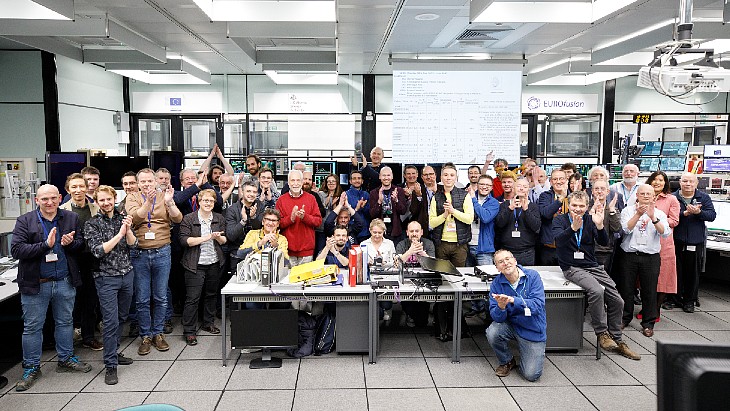 (Image: United Kingdom Atomic Energy Authority/EUROfusion)
(Image: United Kingdom Atomic Energy Authority/EUROfusion)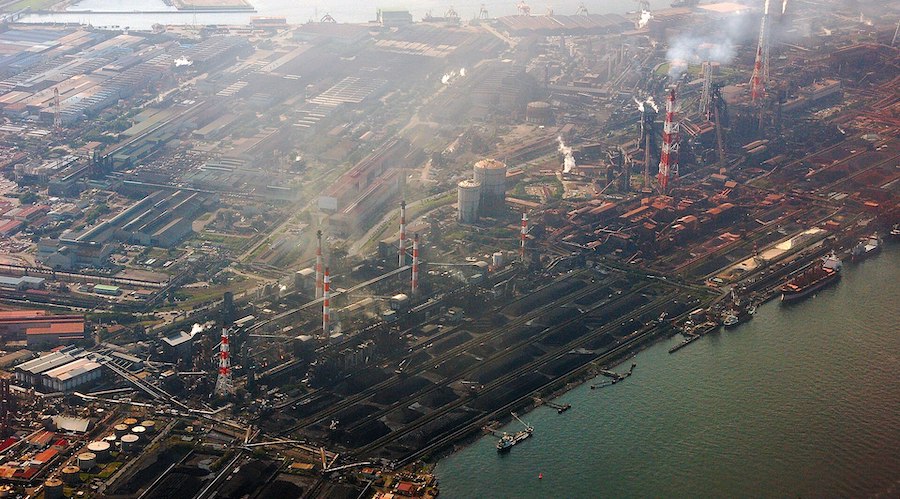

.jpg?ext=.jpg) Energy Fuels' White Mesa mill in Utah is the only currently operating conventional uranium mill in the USA for ore from underground mining operations. (Image: US NRC/Energy Fuels)
Energy Fuels' White Mesa mill in Utah is the only currently operating conventional uranium mill in the USA for ore from underground mining operations. (Image: US NRC/Energy Fuels)
.jpg?ext=.jpg) Removing the vessel head marks the start of the final phase of decommissioning of the boiling water reactor (Image: Sogin)
Removing the vessel head marks the start of the final phase of decommissioning of the boiling water reactor (Image: Sogin)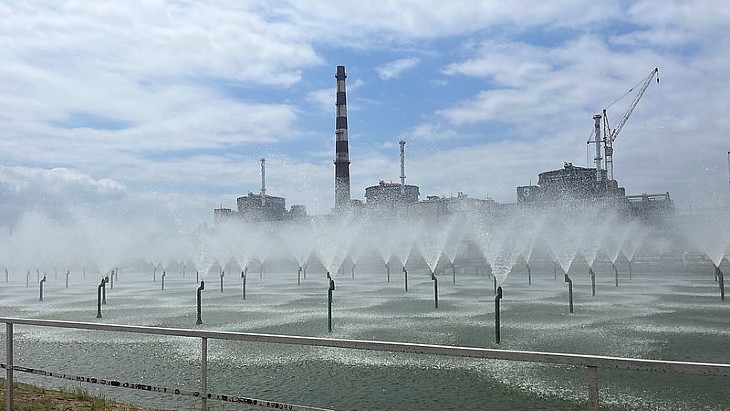 This picture was taken during an IAEA visit in June (Image: IAEA)
This picture was taken during an IAEA visit in June (Image: IAEA)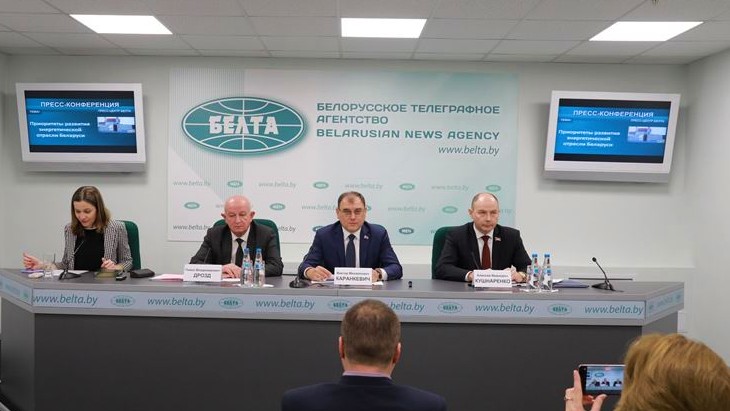 (Image: Belta)
(Image: Belta)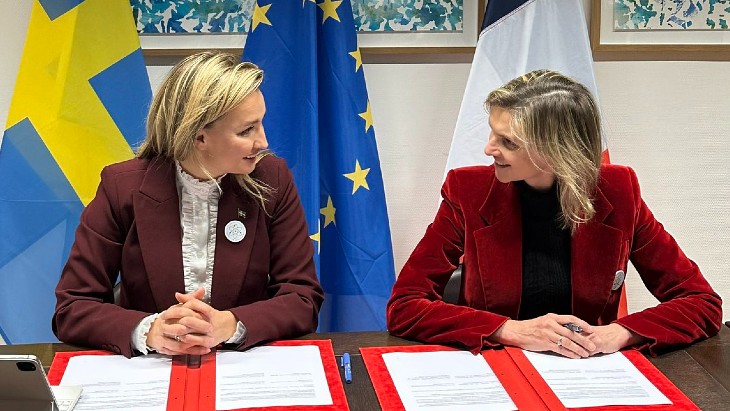 (Image: @AgnesRunacher on X)
(Image: @AgnesRunacher on X) Secure transportation was a key part of the process (Image: (Photo: Chilean Nuclear Energy Commission)
Secure transportation was a key part of the process (Image: (Photo: Chilean Nuclear Energy Commission).jpg?ext=.jpg) ARC Clean Technology, developer of this 100 MW sodium-cooled fast reactor, is one of the recipients (Image: X/@GovNuclear)
ARC Clean Technology, developer of this 100 MW sodium-cooled fast reactor, is one of the recipients (Image: X/@GovNuclear)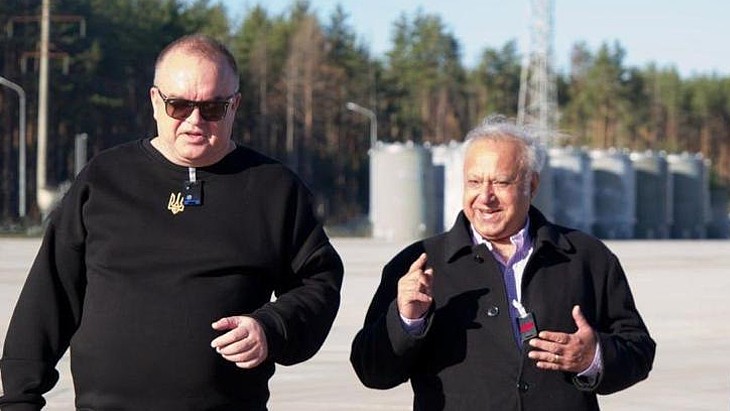 Kotin and Holtec International vice president for Ukraine Riaz Awan at the CSFSF site, with HI-STORM casks in the background (Image: Energoatom)
Kotin and Holtec International vice president for Ukraine Riaz Awan at the CSFSF site, with HI-STORM casks in the background (Image: Energoatom).jpg?ext=.jpg) Diablo Canyon (Image: PG&E)
Diablo Canyon (Image: PG&E)